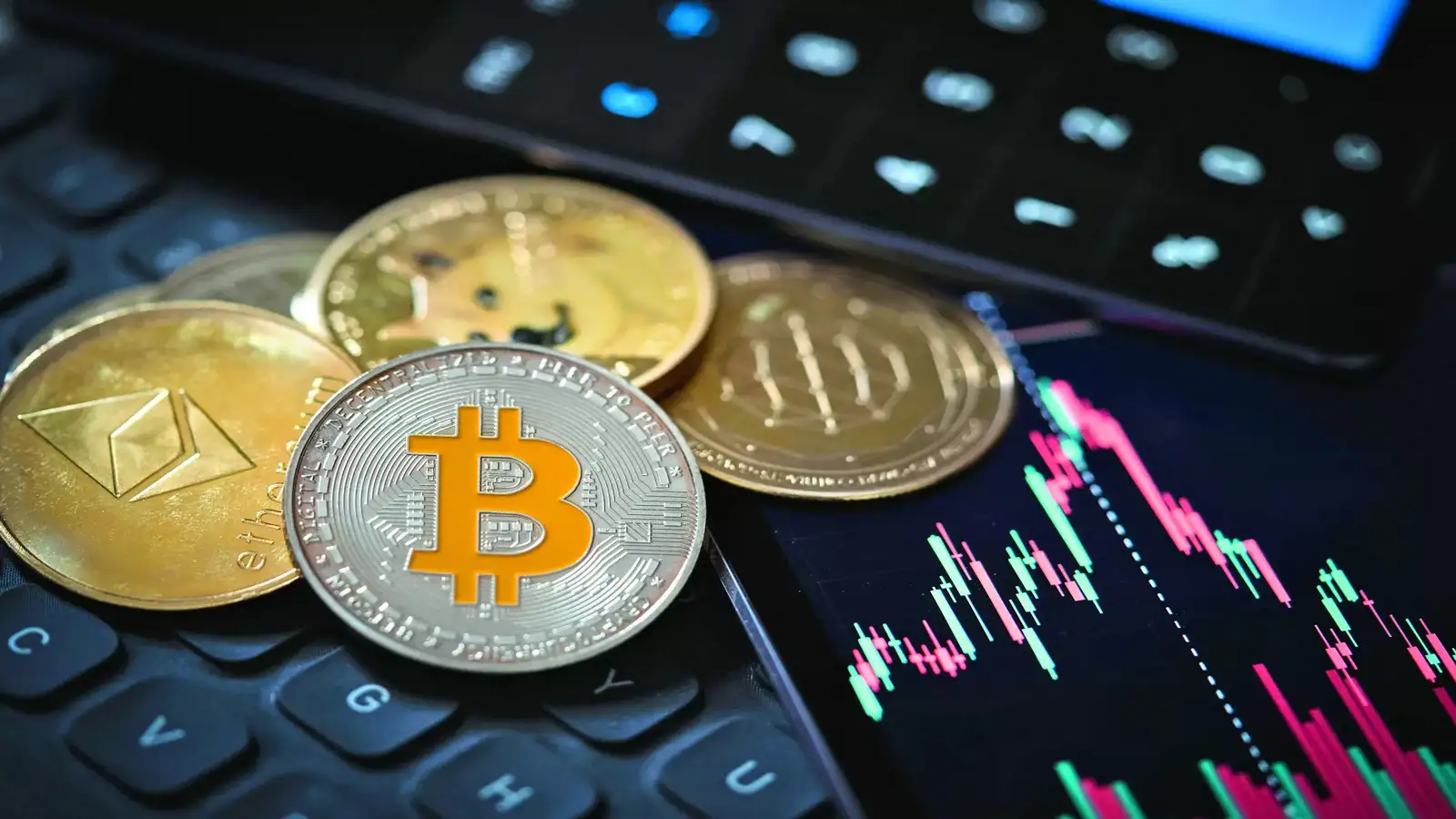Fundamental Value vs. Speculation: What Really Drives Crypto Prices?


KEY TAKEAWAYS
- Crypto markets are shaped by a dual dynamic: fundamental value and speculation.
- Fundamentals include blockchain security (hashrate), adoption, and usability, anchoring long-term value.
- Speculation arises from hype, media coverage, FOMO, and macroeconomic trends, driving short-term volatility.
- Price bubbles form when speculation vastly outweighs fundamentals, often followed by corrections.
- Investors benefit from fundamental analysis, risk management, and long-term perspectives while being mindful of speculative excess.
Cryptocurrency markets have captivated investors worldwide with their rapid price swings and potential for high returns. Yet, understanding what truly drives these extreme price movements, whether it is fundamental value or pure speculation, remains a critical question for investors, analysts, and regulators alike.
Unlike traditional assets, present unique challenges when it comes to valuation and price dynamics, often leaving market observers grappling with the influence of hype versus intrinsic worth.
This article explores the nuanced interplay between fundamental value and speculation in driving crypto prices, illuminating the forces behind market behavior and offering guidance on navigating this complex landscape.
The Nature of Crypto Price Dynamics
Cryptocurrencies frequently exhibit pronounced volatility and price bubbles, fueling popular perceptions of the market being speculative and detached from reality. However, this narrative only partially captures the reality.
Crypto prices are influenced by two overlapping but distinct factors: fundamental value, which is those measurable attributes that reflect an asset’s intrinsic economic worth, and speculative factors that are demand-driven by market sentiment, momentum, and investor psychology.
Understanding these drivers is complicated by the novelty of crypto assets. Unlike traditional companies with earnings, dividends, or physical assets, many cryptocurrencies lack conventional cash flows.
Their value often hinges on technology adoption, network effects, security, and usability, which are harder to quantify. On the other hand, retail and behavior, media attention, and macroeconomic shifts can significantly amplify speculative interest and cause price swings detached from fundamentals.
What Constitutes Fundamental Value in Crypto?
Fundamental value in cryptocurrencies fundamentally derives from the utility and trust embedded within their underlying blockchain ecosystems. Two critical blockchain characteristics have been identified as key drivers of intrinsic value:
- Computing Power (Hashrate): This reflects the security and trustworthiness of a blockchain, particularly for mineable cryptocurrencies like BTC and ETH. The decentralized network of expends substantial computing resources to validate transactions, secure the ledger, and prevent attacks. Greater hashrate signifies increased security and network reliability, which boosts investor confidence and thus value.
- Network Activity and Adoption: The size and vibrancy of a blockchain’s user network significantly impact its value. Metrics such as the number of unique active addresses, transaction volume, and overall liquidity indicate the level of real-world use and acceptance of the cryptocurrency. A larger, more active network implies stronger demand for the asset as a medium of platform or store of value, underlining its fundamental economic utility.
Studies analyzing these factors demonstrate a strong correlation between increases in computing power and network activity with rises in cryptocurrency prices over the long run, indicating that fundamentals do exert substantial influence on value creation in the space.
Furthermore, such fundamentals tend to anchor prices, providing a baseline level below which prices rarely fall for extended periods.
The Role of Speculation in Crypto Prices
While fundamentals matter, speculation undeniably plays a significant role in cryptocurrency price dynamics. Speculative trading arises from investor sentiment, behavioral biases, and external events that drive price momentum beyond intrinsic worth. Characteristics of speculative influences include:
- Hype and Media Attention: Positive news, celebrity endorsements, regulatory developments, or technological upgrades can spark hype cycles, inflating prices rapidly as new investors rush in, hoping for quick gains.
- Price Momentum: Momentum trading occurs when rising prices attract more purchaviewrs, creating self-reinforcing trends and often leading to bubbles. Conversely, sudden trade-offs can trigger panic and sharp declines.
- Market Sentiment and Fear of Missing Out (FOMO): Emotion-driven purchaseing due to can push prices away from underlying value, especially in retail-dominated environments.
- Macro Factors and Speculative Capital Flows: Broader economic conditions, monetary policy shifts, and investment flows from hedge funds or institutional traders can magnify speculative cycles.
Empirical research validates that speculative factors contribute to short- and medium-term price volatility in crypto markets, sometimes causing prices to deviate markedly from fundamental indicators for extended periods. Yet, speculative bubbles often eventually burst, with prices reverting towards levels more consistent with fundamentals.
Balancing Fundamentals and Speculation: Research Insights
Academic research offers a balanced view by modeling crypto prices using a combination of fundamental and speculative factors. For instance, blockchain computing power and network metrics explain a significant portion of price variation over time, confirming the importance of intrinsic value drivers.
Simultaneously, models incorporating speculative proxies like price momentum and BTC returns (as a benchmark for market sentiment) account for deviations and accelerated price movements attributable to investor psychology. This dual-factor approach highlights how fundamentals set the long-term valuation framework, while speculation drives short-run price variability.
One notable empirical finding is that in times when prices greatly exceed trends in computing power or network size, which is indicative of speculation-heavy phases, prices eventually correct, returning closer to fundamental values. This cyclical behavior underlines the market’s innate tendency to reconcile prices with actual characteristics over time.
Case Studies: When Fundamentals and Speculation Diverge
The history of BTC provides illustrative examples of the push and pull between fundamental value and speculation:
- The 2017 Price Boom: BTC’s price surged from around $1,000 to nahead $20,000, fueled largely by speculative frenzy and retail investor hype. Network fundamentals like hashrate and active addresses also increased, but did not justify the rapid six-fold price increase, leading to a bubble that collapsed in 2018
- The 2020-2021 Rally: While hit new all-time highs above $60,000, this rally was supported by growing institutional adoption, stronger network security (higher hashrate), and real-world use cases, indicating that fundamentals played a more substantial role, along with renewed investor enthusiasm.
These contrasting episodes reveal that though speculation can inflate or deflate prices in the short term, over longer horizons, fundamentals tend to assert greater influence.
Implications for Crypto Investors
Recognizing the interplay between fundamental value and speculation has significant implications for investment strategies:
- Conduct Fundamental Analysis: Evaluate network health, computing power, adoption trends, and technology updates to assess the intrinsic value of crypto assets rather than relying solely on price trends.
- Beware of Speculative Excess: Avoid getting caught in hype cycles by observing when prices decouple significantly from fundamental indicators, signaling potential bubbles or corrections.
- Adopt a Long-Term Perspective: As fundamentals largely determine the sustainable value of cryptocurrencies, maintaining a long-term view can assist ride out short-term speculative volatility.
- Consider Market Sentiment: Analyze social media, news flow, and trading volumes to gauge speculative sentiment and identify purchaseing or tradeing pressure points.
- Diversify and Manage Risk: Given the unpredictable nature of speculative events, broadening investment across multiple assets and employing risk management techniques is prudent.
Balancing Fundamentals and Speculation: A Clearer Lens on Crypto Price Dynamics
Cryptocurrency prices are driven by a complex blend of fundamental value and speculative forces. While the intrinsic worth of a crypto asset, grounded in computing power and network activity, ultimately anchors price over the long run, investor sentiment, hype, and momentum can cause short-run deviations and volatility.
Investors who understand and balance these dual drivers are better positioned to navigate the volatile crypto markets. Rather than viewing crypto prices as pure speculation or purely fundamentals, recognizing the dynamic interaction between the two provides a clearer, more comprehensive framework for valuing digital assets.
FAQ
What are the main drivers of cryptocurrency prices?
Crypto prices are influenced by both fundamental value (network adoption, hashrate, utility) and speculation (hype, sentiment, momentum trading, and macroeconomic factors).
How do fundamentals create value in crypto?
Fundamentals come from blockchain security (hashrate), adoption metrics (active addresses, transactions), and usability. These provide a baseline value that anchors long-term price trends.
What role does speculation play in crypto markets?
Speculation fuels short-term price swings through hype cycles, momentum trading, FOMO, and reactions to news or regulations. It often drives bubbles and sharp corrections.
Can fundamentals and speculation interact?
Yes. Fundamentals set the long-term trajectory, but speculation can cause deviations. Over time, prices tend to realign closer to fundamental indicators.
How can investors protect themselves from speculation-driven bubbles?
By monitoring when prices significantly deviate from fundamentals, diversifying portfolios, managing risk, and maintaining a long-term perspective on intrinsic blockchain value.
What lessons does BTC’s history offer?
The 2017 boom showed speculation’s power to inflate bubbles, while the 2020–2021 rally demonstrated how fundamentals plus institutional adoption support more sustainable growth.







